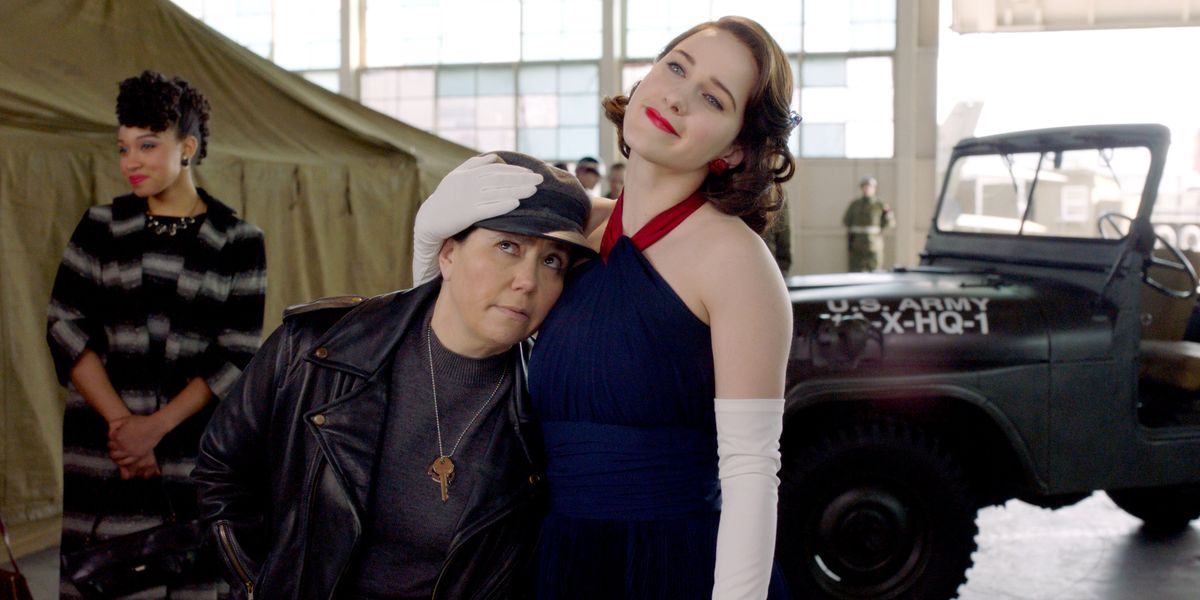Why This Season of "The Marvelous Mrs. Maisel" Will Be the Danciest Yet
Marguerite Derricks might be employing more commercial dancers than any choreographer in New York City. That’s because “The Marvelous Mrs. Maisel,” which she’s worked on since the first season in 2017, has quickly become one of the danciest shows on television.
The show’s third season, which drops tomorrow on Amazon, will have more dance than ever (on every episode except for one!). That’s because the showrunners, Amy Sherman-Palladino and Dan Palladino, who Derricks has worked with on “Bunheads” and the Netflix reboot of “Gilmore Girls,” “treat dancers like royalty,” says Derricks, and hire dancers for non-dancing roles like waiters and department store workers. (This means the show has to pay them more than they would a regular actor.)
We talked to Derricks about what it’s been like to work on the hit show, and what we can expect from season three:
On casting the show’s many dancers:
Since most of Derricks’ career has involved choreographing film and television projects in Los Angeles, filming “Maisel” in the New York area meant getting to know a new crop of dancers—each of whom can usually only be seen in one episode for continuity reasons. (Though some LA-based dancers wanted to be on the show so badly that they’d fly themselves to New York for auditions and filming.)
Derricks always asks dancers to improvise in auditions—and often ends up using what they come up with, which helps the frequent social dancing scenes look more natural. She also looks for dancers who can adapt quickly, as she often has to re-choreograph scenes on the fly when the camera movement changes.
On working with the stars of “Maisel”:
With the exception of Rachel Brosnahan, who plays the show’s namesake Midge Maisel, the main cast members of “Maisel”—which includes Tony Shalhoub, Alex Borstein and Jane Lynch—don’t do all that much dancing. But Derricks says they are innate movers who know how to “dance with the camera.”
“They know when to turn, which shoulder to turn over, they instinctively know if the camera is sweeping around,” she says. “They’re like a magnet.”
Because Brosnahan is in almost every scene, Derricks usually only gets an hour to teach her choreography. “But she’s a genius,” says Derricks.
On choreographing the camera:
In addition to choreographing all the show’s dance moments, Derricks also has a hand in shaping scenes that aren’t so obviously choreographed. Because Sherman-Palladino loves “oners,” or long, uninterrupted shots where the camera is moving through a scene, Derricks is often recruited to help choreograph where the camera is going.
For instance, the first episode of season two had Brosnahan sliding around on a rolling chair, answering phones in the B. Altman switchboard room. “You have to really know choreography to know that was even choreographed,” Derricks says. (Brosnahan only fell out of her chair once while rehearsing the scene, Derricks says.)
On setting television records:
The first episode of season three—which has Midge performing at an army base—set the record for the most television extras in one scene, with hundreds of G.I.s as the audience for Midge, Shy Baldwin, and other acts.
“Every single take was so fresh,” says Derricks. “Their energy and enthusiasm was off the charts.” This was one epic scene that Derricks couldn’t help with: Choreographers are not allowed to direct extras, otherwise they automatically get bumped to a principal contact.

On dancing without music:
Usually, when dance scenes on “Maisel” are filmed, the dancers can’t hear any music because dialogue is being filmed simultaneously. Instead, the dancers listen to a “thump track” (essentially a recorded metronome) to keep the rhythm, and listen closely to the dialogue.
In an episode of season two—one the hardest scenes Derricks has choreographed—Midge gets passed around between eight dance partners while speaking nine pages of dialogue, all in one camera take. (Derricks taught the choreography to Brosnahan in an hour, a month before filming—then never got to rehearse it again.) “She nailed it every single time,” says Derricks.
On what to expect from season three:
Derricks can’t say much about season three until it launches tomorrow—but it’s safe to expect more dancing than ever. “Amy and Dan have really upped that,” she says. “There are some unexpected treasures. Look for everything to be heightened.”
Though Derricks has multiple Emmy Awards under her belt, she says that working on “Maisel”—and with the show’s famously detail-oriented showrunners—has been a new career high. “When you’ve done as much as I have, to find yourself growing is really exciting,” she says.




